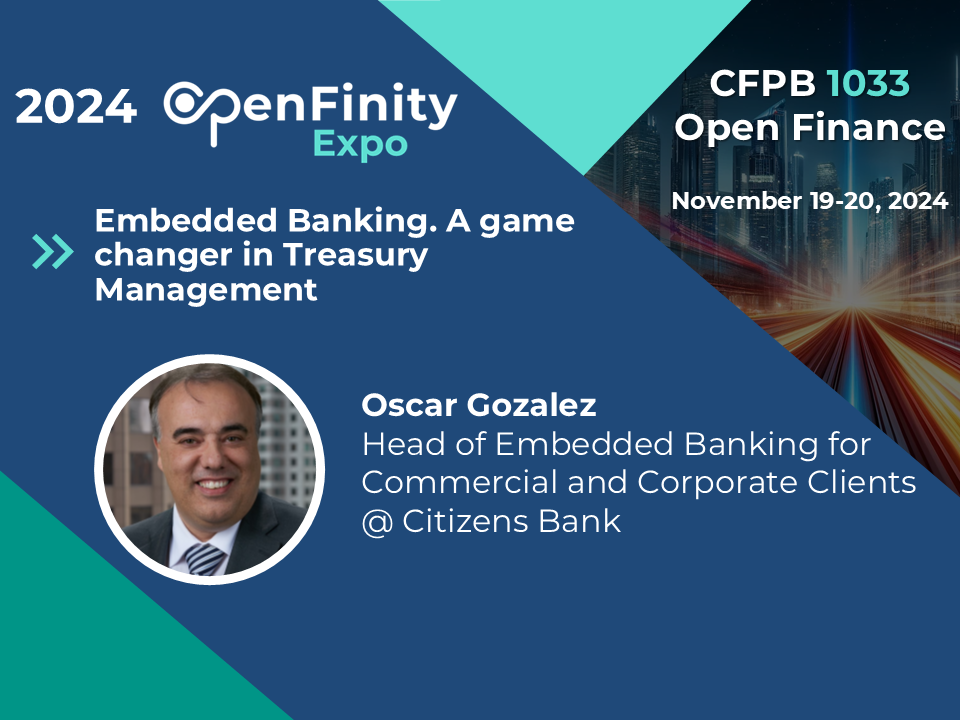Embedded Banking: A game changer in Treasury Management
- OpenFinity

- Jan 10
- 2 min read
Session from the November 19-20, 2024 virtual OpenFinity Expo

Video replay and slides available here:
Session Description:
Bank is something you do, not somewhere you go. The adoption of Open Banking APIs and Bank as a Service (BaaS) open the opportunity for non-financial applications to distribute and service banks products, embedding them in their own systems.
A fast-growing use case is embedded banking for Treasury Management, benefiting business and commercial clients. ERP’s, accounting software, and Treasury Workstations are effectively creating a new channel, competing with the traditional online banking, file transmissions, etc.
Embedded Banking is a game changer for treasury management, eliminating the need for a finance professional to login to multiple platforms at a time, by bringing account information and payment services into the system they use daily.

Samples from the presentation
Key Takeaways:
Definition and Context:
Embedded banking integrates financial services into third-party systems via APIs.
Moves banking functions (payments, reconciliations) into environments like NetSuite, Sage, and SAP.
Adopts the concept that "banking is something you do, not somewhere you go."
Efficiency Gains:
Users can handle payments, account reconciliation, and balance checks from their daily-use systems without logging into a bank portal.
Eliminates redundant processes, such as downloading files for reconciliation.
Competitive Advantage:
Banks offering embedded banking solutions gain a competitive edge.
The integration strengthens customer retention and attracts new business by offering seamless, sticky experiences.
Technological Framework:
APIs as Enablers: APIs drive the transformation by exposing banking services to third-party systems.
Distribution Channels: Non-financial platforms become new channels for delivering banking products.
Use Cases and Examples:
Retail: Apple Wallet integrates Goldman Sachs banking services for a seamless user interface.
Treasury: Citizens Bank ERP Connect integrates banking into cloud-based ERPs for payments and reconciliation.
Coexistence of Channels:
Traditional banking channels (branches, ATMs, online/mobile banking) will coexist with embedded banking, though the latter is expected to grow.
Future Implications:
Embedded banking is poised to become a major distribution channel for banks.
New services like account verification and automated remittance emails are emerging as supplementary offerings.
Implications:
For Banks: Embedded banking offers opportunities for deeper client relationships, increased service adoption, and new revenue streams.
For Businesses: Operational efficiency and better treasury management through automation and real-time capabilities.
For Technology Providers: Greater collaboration between banks, fintechs, and ERP platforms to develop integrated solutions.
The presentation concluded by emphasizing the transformative potential of embedded banking in reshaping treasury operations and fostering innovation in financial services.


